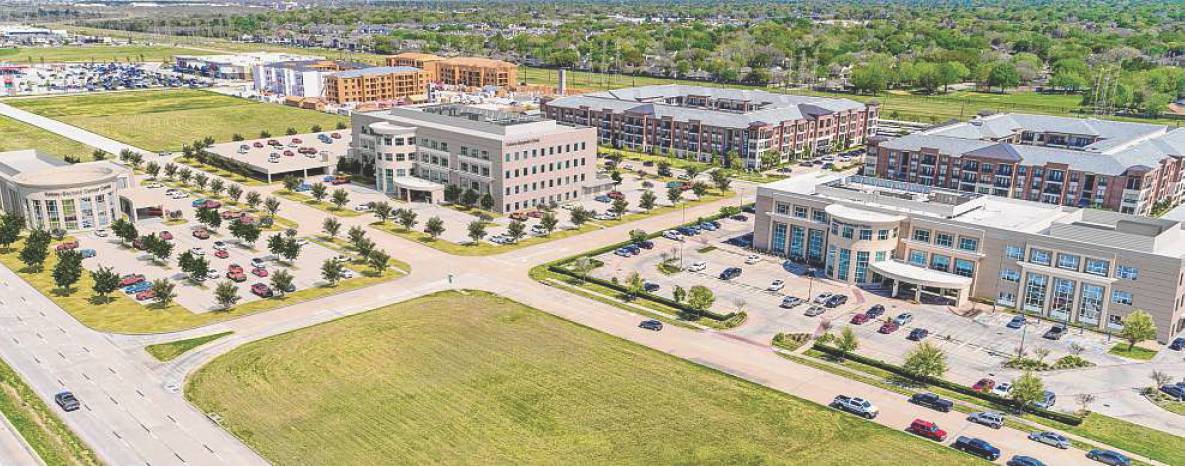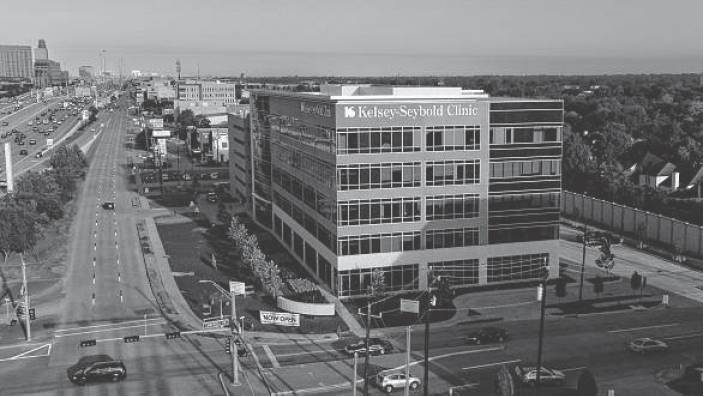Kelsey-Seybold expanding
The five-year plan aims to have clinics no farther than 10 minutes away from home
By Rebecca Carballo STAFF WRITER
The health care provider Kelsey-Seybold Clinic has embarked on a five-year expansion plan that it says would place clinics no more than 10 minutes away from 95 percent of Houstonians.
The health system expects to spend more than $1 billion on construction costs alone to extend its reach into the suburbs and throughout the Houston area, Kelsey-Seybold officials said. The goal is to tap growing demand for services as the region’s population — and particularly the elderly population — increases.
Greater Houston’s population reached 7.2 million last year, up 1 percent from 2021 and 19 percent from 10 years ago, according to the most recent census data. Seniors, or residents over 65, made up 11.5 percent of Houston’s population in 2019, up from 8.6 percent in 2010, according to the Greater Houston Partnership.
“Part of the reason for this growth is because Houston is a very dynamic and economically vibrant city, with a lot of businesses moving here, as well as local businesses expanding,” Dr. Tony Lin, chairman and CEO of Kelsey-Seybold, said. “Plus, we’re also seeing large numbers of seniors retiring to the Houston area. We’re just seeing a population boom.”
Kelsey-Seybold, which operates 32 clinics, began to consider expansion in 2017, but sustained setbacks along the way — starting with Hurricane Harvey, which caused some $125 billion of damage throughout the region. Kelsey-Seybold was forced to redirect its spending to repairing and renovating clinics damaged by the widespread flooding.
Just as those projects wound down, the COVID-19 pandemic hit. Kelsey-Seybold then focused its resources on the wave of sick patients that poured into its clinics.
The health system, headquartered in southwest Houston, is now back in expansion mode, enlarging existing clinics, building new ones and adding services. In this year alone, Kelsey-Seybold completed or launched 15 projects.
One of the most recent projects announced is the construction of a 165,000-square-foot campus in the City Place community in Spring. It will offer primary and specialty care services, an ambulatory surgery center and a cancer center, similar to campuses undergoing expansions at the Bay Area and Fort Bend clinics.
It opened a new Memorial Villages campus in early August. Kelsey-Seybold plans to reach 50-plus locations by 2026, focusing on the suburbs.
“It’s not just about putting additional facilities out in the periphery,” said Kenneth Janis, the chief operating officer. “But it’s offering more services in those places that are more convenient and closer to our patients’ homes.”
Kelsey also is growing its staff. This year, it added about 127 providers to its organization — about 60 percent of them are specialists. Next year, Kelsey leadership anticipates adding an additional 185 providers. By next week, Kelsey will have in total about 670 providers on staff.
Kelsey said its expanded and new campus locations will offer infusion centers, where patients can receive treatments such as chemotherapy, imaging, such as MRIs, CAT scans, and endoscopic procedures, such as colonoscopies, at more locations in the Houston area. It also intends to increase ambulatory surgery centers, which provide surgeries that don’t require hospital stays for recovery.
The types of services they are focusing on and where they are choosing to expand make sense from a business standpoint, said Vivian Ho, a health economist at Rice University.
“All of (those) services ... are reimbursed at levels that enable providers to make good and often great profits,” Ho said. “That’s particularly true in the suburbs, where one encounters a higher proportion of commercially insured patients versus Medicare and Medicaid patients, which reimburse at lower levels.”
While Kelsey-Seybold’s expansion plan is aggressive, she added, it’s similar to the strategies of other major health care systems in Houston, such as CHI St. Luke’s, Houston Methodist and Memorial Hermann.
More providers offer procedures at ambulatory surgery centers, or other settings outside of hospitals because of convenience and affordability, Lin said.
The average price of common procedures performed in a hospital outpatient department in 2019 was $7,716 — 144 percent more than the average price of the same procedures performed in ambulatory surgery centers, according to a 2021 report from United Health Group. Procedures are typically less costly outside of a hospital setting, and patients can avoid unexpected charges like facility fees.
Kelsey operates an ambulatory surgery center at its main campus but plans to open four to six throughout the broader Houston area by 2026. It also runs two endoscopy units, one in its main campus, the other in Spring. It plans to add seven throughout the region by 2026.
“It’s all part of value based care,” Lin said. “We’re keeping the quality, providing the patient with a good experience, while reducing the total cost of care.” becca.carballo@chron.com

